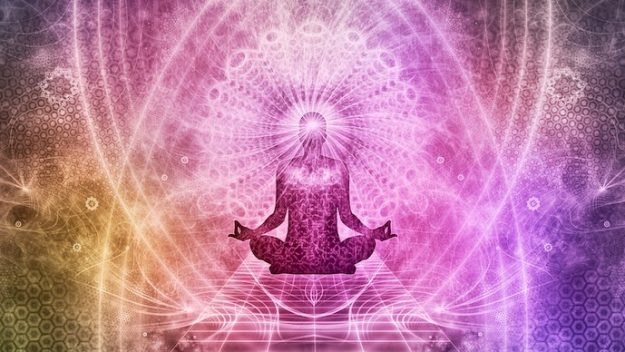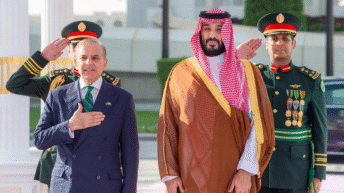
There is a pop culture icon named Marie Kondō who is known to the world over for her expertise in transforming encumbered spaces into sacred spaces that exude tranquility and inspiration. What has become her trademark approach to reduce untidiness and clutter is to hold the item in your hand and ask, “Does it spark joy?”
Over the past few months, there have been a series of discussions taking place among thought leaders in the interfaith community about humanity and the future of spirituality[1]. All have agreed that the last 20 months have been the Dickensian best of times and the worst of times. While the pandemic has brought forth remarkable acts of compassion and heroism by the simplest of folks, at the individual level, most continue to experience anxiety, isolation, and fear as the waves of spread continue to sweep through our world. As we traverse this extended and ostensibly endless moment of danger, death, and suffering, in the churning, the question rising to the surface is, “How can we meaningfully engage spirituality with what is before us?”
Even as religious institutions have had to re-vision ways of continuing to stay connected to and service their congregants under the strict restrictions of COVID-19, interfaith leaders have suggested that there has been an increasing move away from institutionalized religion toward experiential spirituality. In this challenging time – this seeming abyss of annihilation – there is the emergence of a more profound yearning for depth, truth, and connectivity. There is a deeper longing for spirituality that arouses creativity and empowerment based on the principle of our common humanity.
It has been suggested that Millennials and Gen Z especially have the least desire to be associated with the human constructs and weighty dogma of organized religion but want to be spiritually connected in a way that engages them in actions that enable them to support their values, perform direct service where “their hands can touch the hands of those in pain,” and become involved in meaningful institutional and societal change. This is what brings them a sense of joy and fulfilment and what they are most likely to retain and advance – experiential spirituality through a Marie Kondō-ing approach to religion and spirituality. This has led to a rational deduction that there is space for the repurposing of spiritual efforts for them to feel fulfilled in their personal lives, and that community is a valuable path to helping them to manifest their personal and societal goals and reach their potential.
To this end, Venerable Vietnamese Thiền Buddhist Monk and peace activist, Thích Nhất Hạnh has offered, “It is possible that the next Buddha will not take the form of an individual. The next Buddha may take the form of a community, a community practicing understanding and loving kindness, a community practicing mindful living. This may be the most important thing we can do for the survival of the earth.”
And I will add, the survival of our earth is critical for the survival and well-being of humanity as well because both are intricately interrelated, interdependent, and interconnected.
As we navigate this dark night of the soul with an exuviation of old structures and “this is the way we have always done things,” the concept of inter-spirituality is emerging. It has been proposed that this might be the opportune moment for a convergence of common spiritual traditions and lineages – for example, the Dharmic traditions – in a spirit of partnership and synergy through dialogues and an exchange of transmissions related to the transformative process.
It has also been proposed that the guru-śiṣya paramparā could be applied, but rather than focus on one guru, there could be circles of teachers extracted as experts from various faith traditions, all of whom will be equipped to provide deep learning in an interspiritual learning environment, i.e., an interfaith curriculum of spiritual learning that will be inclusive, intimate, unifying, and effected through transformed structures and practices in a setting similar to the University of Nālandā, which was legendary in ancient times.
Certainly, the interfaith leaders concur that this is a time of reflection and renaissance. It is not as much a period of what we know rather than how our entire being is interpreting our existence in the current state of our world. It is the time in which we are questioning more and more, “Why am I here?,” “What is my purpose?,” and “What can I do to help?” As a greater heightened consciousness is becoming established in our bare, raw relationship with life, and we are maturing spiritually, we are yearning for a deeper wisdom and way of living that many organized religions largely have not been able to satiate sufficiently.
Interestingly, against the backdrop of this ongoing discussion, a 2015 report by the Pew Research Center in the US titled, “The Future of World Religions: Population Growth Projections, 2010-2050,” has noted that the global religious landscape is changing rapidly. They have projected that globally, by 2050, the number of Hindus will increase as it keeps pace in proportion to global population growth[2].
While factors like fertility, life expectancy, migration, religious switching, and so on, all contribute to its growth, Hinduism is, in essence, an experiential journey from conception to death, and the emotional connectivity is present throughout the space in-between. From the moment a Hindu awakens, the daily experience begins with the conscious recall of the interconnection between himself and the divine in the prayer to Pṛthvī Mātā, “Please forgive the touch of my feet upon Your holy body.” In essence, in that uttering of the mantra, Earth is established as a tirtha upon which he performs his actions. Every action that follows is naivedyam, a sacred offering to the divine.
Bhagavadgītā chapter 9 verse 27 succinctly encapsulates this point of Hinduism as an experience and truly a way of life that transcends regular living and transforms it into a spiritual experience.
yat karoṣi yad aśnāsi
yaj juhoṣi dadāsi yat
yat tapasyasi kaunteya
tat kuruṣva mad-arpaṇam
“All that you do and ingest, all that you offer and give to others, all sādhanā, rituals, rites and tapasya that you may perform, should be done as an offering unto Me.”[3]
Yogi Jaggi Vasudev (Sadhguru) notes, “Everything can be sādhanā. The way you eat, the way you sit, the way you stand, the way you breathe, the way you conduct your body, mind and your energies and emotions – this is sādhanā. Sādhanā means you are using everything as a tool for your wellbeing.”[4] It is a spiritual discipline that carries within it the connectivity of an emotional experience through the mindful practice and absorption of gestures, utterances and identification of the divine element.
In addition, Hinduism offers four soteriological paths – karma, bhakti, jñāna and dhyāna mārga – to mokṣa according to human idiosyncrasies and constitution[5], thus giving everyone a choice of path or combination of paths according to what instills inner joy and a sense of fulfillment in him while journeying to the ultimate goal.
From tens of millions of pilgrims gathered at the same time with their bodies moving in unison at a tirtha where deified Gaṅgā meets Yamunā and Sárasvatī, to millions of Hindu women the world over waving ghee-lit lamps and ringing brass bells before mūrtis installed on altars in their homes and lovingly whispering ancient mantras under their breath at dawn and dusk, to thousands of Hindu volunteers across the globe collaborating and cooperating within the principle of “sarve bhavantu sukhinaḥ, sarve santu nirāmayāḥ, sarve bhadrāṇi paśyantu, mā kaścidduḥkhabhāgbhavet, oṃ śāntiḥ śāntiḥ śāntiḥ” to manage the distribution of vaccines to their respective populations and help to reduce the risk of spread of COVID-19, to one single yogi draped in saffron robes sitting solitary, eyes closed, detached from this world while visualizing the One who created the world, meditating blissfully in a cave deep in the snow-capped Himalayas, Hinduism is an experiential tradition.
The pandemic has seen a resurgence of the natural environment in numerous places with a marked improvement in environmental parameters like air and water quality as well as a flourishing of wildlife. The interfaith leaders have noted that, given the current declining conditions of our world, the time is also propitious for humanity to make strides forward and engender a renewal and regeneration of enlightened consciousness in the human relationship with nature, each other, and the divine, starting with the individual. So, on the open table of a virtual smorgasbord of religion and spirituality, what sparks joy for you?
References
[1]“The Spiritual Future of Humanity: Conversations with Contemplative Thought Leaders.” Global Peace Initiative of Women, 2021
[2] “The Future of World Religions: Population Growth Projections, 2010-2050.” Pew Research Center, 2015.
[3] Translation by Sadhvi Bhagawati Saraswati
[4] “Sādhanā.” Wikipedia
[5] “Three Yogas.” Wikipedia






Add comment